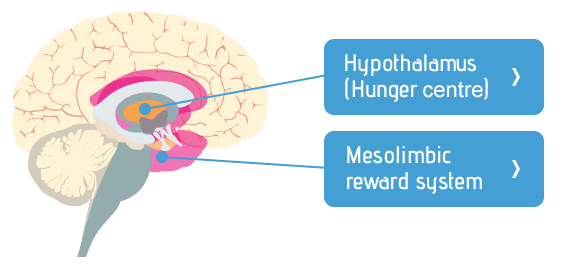The Science
“I’m not hungry, so why do I keep eating?”
Hunger and cravings are not the same thing and cravings can compromise weight loss attempts.
Hunger is an urge to eat to satisfy a metabolic need for food
But cravings are an intense desire to eat food rich in salt, sugar or fat to give pleasure/reward that may occur without a metabolic need for food
- Men tend to crave savoury food
- Women tend to crave high-fat sweet foods
Cravings can be tied to the sight, smell and taste of food, both real or imagined, as well as a person’s emotional state and habits
Effectively targeting food cravings can facilitate weight loss and maintenance
Keeping your weight in check is all down to eating well, being active and having willpower, right? An increasing body of robust scientific evidence suggests otherwise. While lifestyle is important, complex neurobiological mechanisms play a role in regulating hunger and cravings.
Two areas of the brain are involved in regulating hunger and cravings: the hypothalamus (hunger centre) and the mesolimbic reward system.
Click on these areas of the brain below to find out more.
There is evidence that the human body is programmed to actively defend against weight loss and maintain a certain range of body weight, known as ‘set point’. Your set point may be determined by your heaviest past weight. When you lose weight and drop below your set point, your brain causes hunger and cravings in an attempt to bring your weight back up to your set point.

